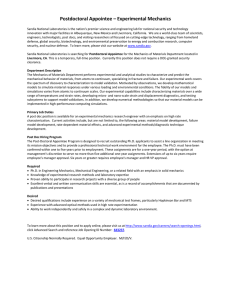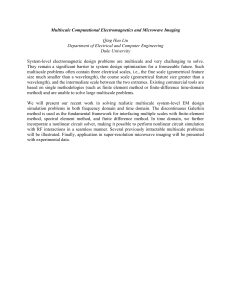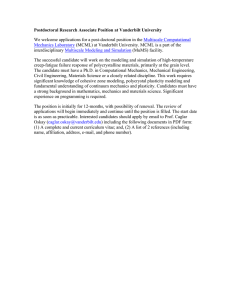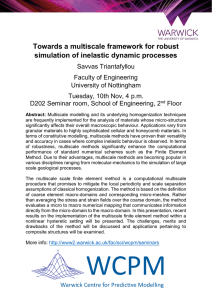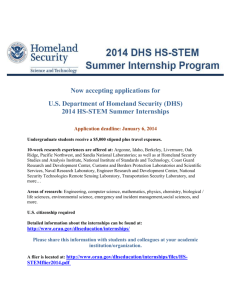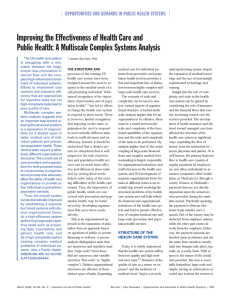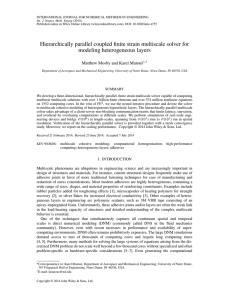The Department of Mechanical Engineering Engineering Mechanics Professor Mark Horstemeyer
advertisement
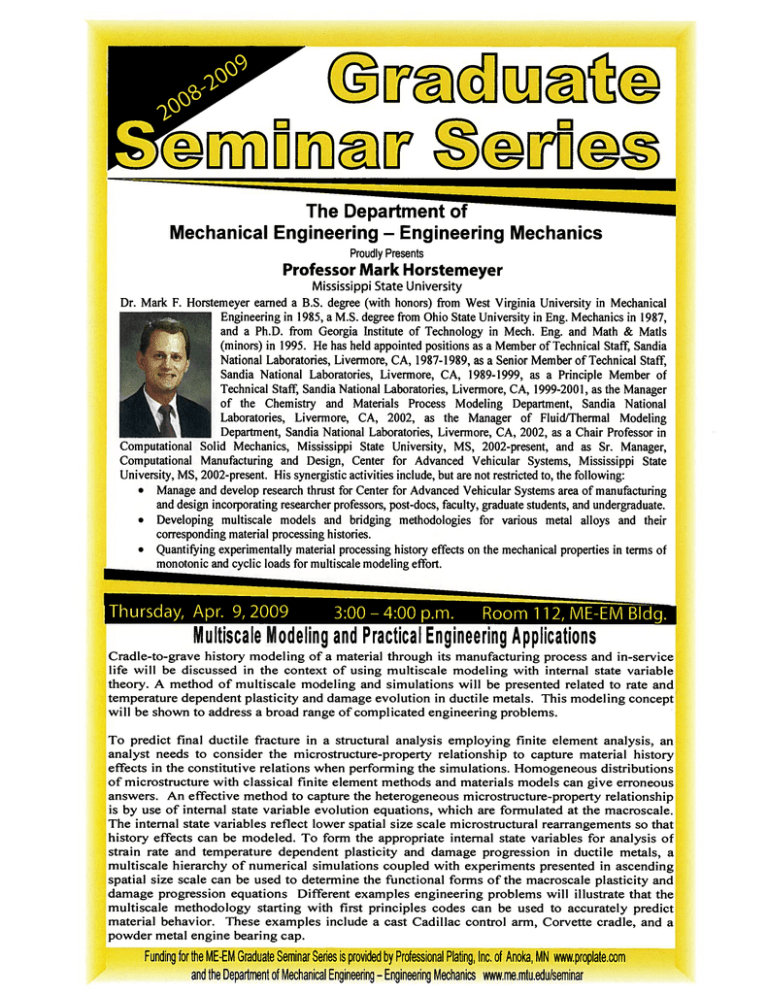
The Department of Mechanical Engineering Engineering Mechanics — — Proudly Presents Professor Mark Horstemeyer Mississippi State University Dr. Mark F. Horstemeyer earned a B.S. degree (with honors) from West Virginia University in Mechanical Engineering in 1985, a M.S. degree from Ohio State University in Eng. Mechanics in 1987, and a Ph.D. from Georgia Institute of Technology in Mech. Eng. and Math & Matis (minors) in 1995. He has held appointed positions as a Member of Technical Staff, Sandia National Laboratories, Livermore, CA, 1987-1989, as a Senior Member of Technical Staff, Sandia National Laboratories, Livermore, CA, 1989-1999, as a Principle Member of Technical Staff, Sandia National Laboratories, Livermore, CA, 1999-2001, as the Manager of the Chemistry and Materials Process Modeling Department, Sandia National Laboratories, Livermore, CA, 2002, as the Manager of Fluid/Thermal Modeling Department, Sandia National Laboratories, Livermore, CA, 2002, as a Chair Professor in Computational Solid Mechanics, Mississippi State University, MS, 2002-present, and as Sr. Manager, Computational Manufacturing and Design, Center for Advanced Vehicular Systems, Mississippi State University, MS, 2002-present. His synergistic activities include, but are not restricted to, the following: • Manage and develop research thrust for Center for Advanced Vehicular Systems area of manufacturing and design incorporating researcher professors, post-docs, faculty, graduate students, and undergraduate. • Developing multiscale models and bridging methodologies for various metal alloys and their corresponding material processing histories. • Quanti1’ing experimentally material processing history effects on the mechanical properties in terms of monotonic and cyclic loads for multiscale modeling effort. Thursday, Apr. 9, 2009 3:00 - 4:00 p.m. Room 112, ME-Eg. Multiscale odeling and Practical Engineering Applications Cradle-to-grave history modeling of a material through its manufacturing process and in-service life will be discussed in the context of using multiscale modeling with internal state variable theory. A method of multiscale modeling and simulations will be presented related to rate and temperature dependent plasticity and damage evolution in ductile metals. This modeling concept will be shown to address a broad range of complicated engineering problems. To predict final ductile fracture in a structural analysis employing finite element analysis, an analyst needs to consider the microstructure-property relationship to capture material history effects in the constitutive relations when performing the simulations. Homogeneous distributions of microstructure with classical finite element methods and materials models can give erroneous answers. An effective method to capture the heterogeneous microstructure-property relationship is by use of internal state variable evolution equations, which are formulated at the macroscale. The internal state variables reflect lower spatial size scale microstructural rearrangements so that history effects can be modeled. To form the appropriate internal state variables for analysis of strain rate and temperature dependent plasticity and damage progression in ductile metals, a multiscale hierarchy of numerical simulations coupled with experiments presented in ascending spatial size scale can be used to determine the functional forms of the macroscale plasticity and damage progression equations Different examples engineering problems will illustrate that the multiscale methodology starting with first principles codes can be used to accurately predict material behavior. These examples include a cast Cadillac control arm, Corvette cradle, and a powder metal engine bearing cap. Funding for the ME-EM Graduate Seminar Senes is provided by Professional Plating, Inc. of Anoka, MN www.proplate.com and the Depament of Mechanical Engineeng Engineenng Mechanics w.me,mtu,eduIseminar —
